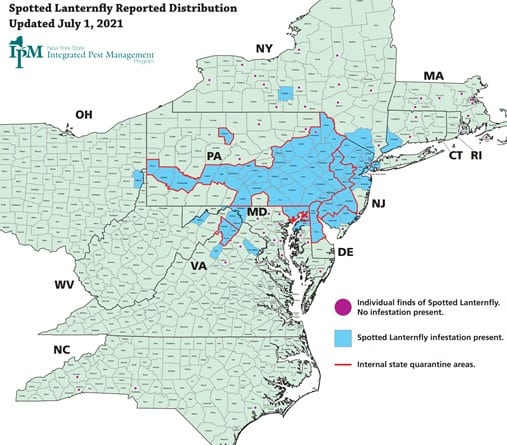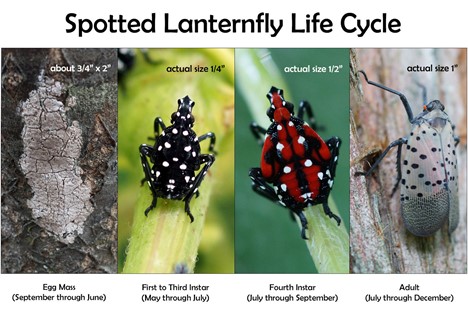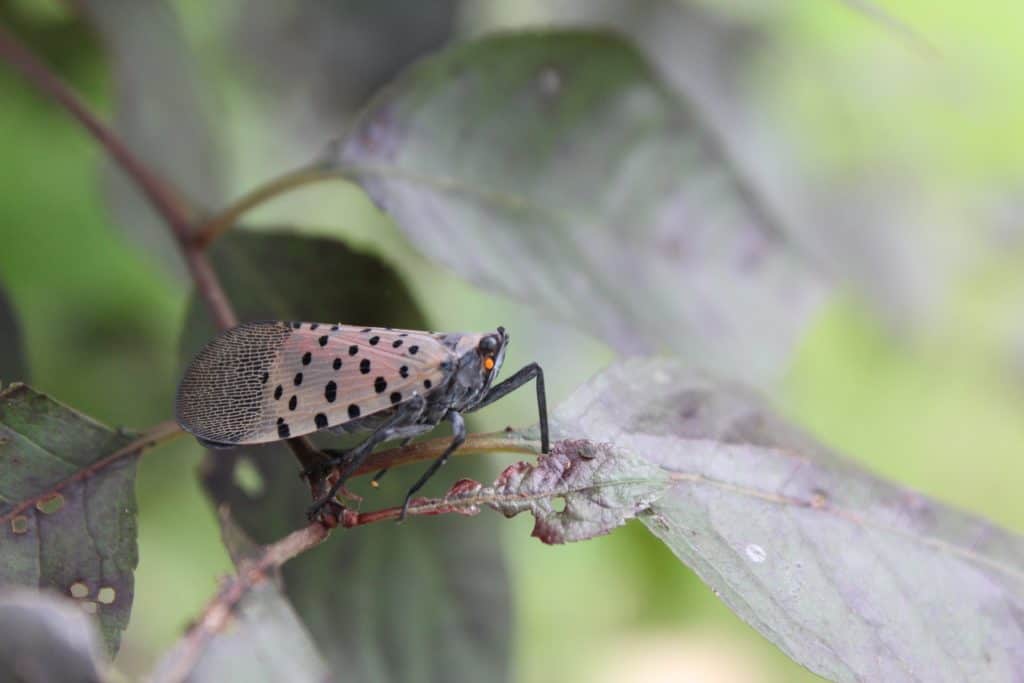Imagine you’re on your back porch, sheltering from the sun under a maple tree. Suddenly, you feel a light mist, like rain. It’s actually a sticky substance called honeydew—the excretion from the spotted lanternfly, an inch-long invasive insect from Asia that feeds on over 70 plant species. The honeydew both attracts bees and is a growing medium for a black substance called sooty mold, which can prevent photosynthesis and cover decks, cars, and more.
This is a real risk for Chesapeake-region homeowners, explained Doris Ann Behnke, a senior agent associate for the University of Maryland Extension Office in Cecil County.
There are bigger worries too. Maryland is still in the early stages of a spotted lanternfly infestation, which shows no signs of stopping. The insect has reached new places this year and poses a serious threat to the state’s agriculture industry, with the potential to cause millions of dollars of damage.
Cecil County, which encompasses the Elk and North East rivers along with parts of the Susquehanna, is one of four counties in the state with documented infestations. Pennsylvania had the first sighting in 2014, and by 2018 it was in Maryland.

While these colorful insects can fly, humans are likely agents for their continued spread.
“They can lay their eggs on any vertical surface,” Emily Zobel, an entomologist and UMD extension agent associate from Dorchester County, explained, including on vehicles like trains and trucks.
The spotted lanternfly also feeds on a wide diversity of plants. A particular favorite is called tree-of-heaven, introduced from China in 1784. It’s a fast-growing tree that’s common in disturbed areas like roadsides and ditches and is challenging to control.
Spotted lanternflies are also attracted to another plant: grapevines. This could be a major problem for Maryland’s wineries, which in 2018 had a total economic impact of $2.65 billion dollars and supported 22,000 jobs. A grape farmer with an infestation may have to use pesticides, which are expensive, intensive, and can be toxic.
“If it’s the only way to keep your product going, you sort of have to,” Zobel said. “Since it feeds off the sap, the spotted lanternfly can throw off the sugar content of the grapes.”
Behnke owns a vineyard, and so far, she’s only seen a few individuals, but that could change quickly.
“Spotted lanternflies and other pests can blow in with big storms,” she said. “You always have to scout your crops afterwards.”

Spotted lanternflies are continuing to spread. They were seen for the first time at the Susquehannock Wildlife Society’s property in Darlington. Scott McDaniel, the executive director, is concerned about how this insect could harm “our already dwindling native plant diversity.”
McDaniel also has to manage another invasive insect, the emerald ash borer, which kills ash trees, so a second pest could extend the damage.
“The cost and loss of a large tree is significant,” McDaniel explained. “These native trees are precious.”
So far, spotted lanternflies have largely stayed away from the eastern shore, but Zobel is worried that this year’s hectic tourist season might widen their distribution.Faced with these obstacles, the UMD Extension Office encourages people to take pictures of any spotted lanternflies or egg masses and send them to their extension office or email them to [email protected].
–Emma Johnson




